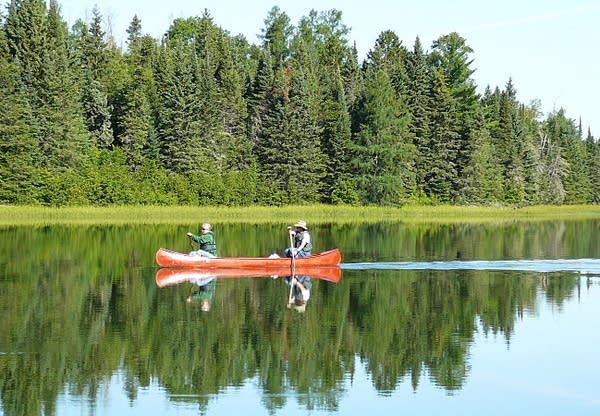Americans want to spend time outdoors, but work stands in the way

Most Americans spend time in nature at least once a month, but there is one big, common barrier to getting outside: the 9-to-5.
A third of U.S. residents say their job and work obligations are stopping them from spending more time in nature, according to a new APM Research Lab survey.
The survey polled 1,000 U.S. adults and found that more than a quarter of adults spend time outside doing things like hiking or visiting a park. Researchers excluded activities like organized sports from counting as time spent outside. Sixteen percent of people said they never spent time in nature.

Respondents were also asked to provide an open-ended response to the question, "What is the single biggest thing that keeps you from spending more free time in nature?"
Create a More Connected Minnesota
MPR News is your trusted resource for the news you need. With your support, MPR News brings accessible, courageous journalism and authentic conversation to everyone - free of paywalls and barriers. Your gift makes a difference.
Thirty-one percent of people cited work as their major barrier. That's not surprising for this country, where workers spend an average of 1,780 hours on the job annually, according to the Organisation for Economic Cooperation and Development. Canadian and Australian workers, by comparison, spent 1,695 and 1,676 hours on the clock each year, respectively.
The next most common response for a barrier to spending time outside was that nothing stood in their way, followed by a disability or health issues making nature activities difficult or impossible.
Adults who spend the most time in nature were between ages 18 and 34 and had college degrees, the survey found. People living in western or north-central regions — which includes Minnesota — were also at the top of the list for time spent outside. Craig Helmstetter, the lab's managing partner, said people age 65 and older were twice as likely to say they never get outside, citing health and disability issues.
Money matters, too, when it comes to getting outdoors. People with household incomes below $25,000 were much less likely to go outside than people from higher income brackets.
African-American survey respondents were also less likely to spend time outside than white respondents. That aligns with the well-documented racial disparities when it comes to outdoor recreation.
For example, a Minnesota Department of Natural Resources official said only 5 percent of state park visitors identified as people of color.
But the DNR hopes to change that. Its "I Can!" initiative aims to get new people engaging in outdoors for the first time. One option is a Spanish-language fishing class. Other classes range from paddling to mountain biking.
There are myriad health benefits that come from spending time outside, especially for kids, including reduced anxiety healthier Vitamin D levels and a greater desire to learn.
Use the audio player above to hear Helmstetter's conversation with MPR News' Dan Kraker, plus information on water safety and the benefits of getting outside.